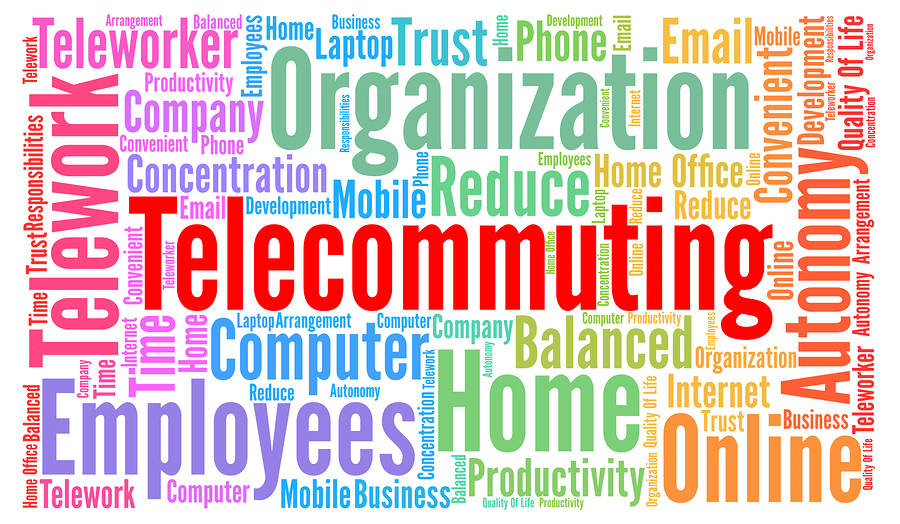Did you know that according to The State of the Remote Job Marketplace by Flexjobs
“3.9 million U.S. employees, or 2.9% of the total U.S. workforce, work from home at least half of the time, up from 1.8 million in 2005.” And, “It is predicted that 38% of full-time staff will be working remotely in the next decade.”
Believe it or not, “Remote workers are made up of almost equal numbers of male and female at 52 and 48 percent respectively, with the average age coming in at 46 years old.”
Although popularity may be growing in this relatively new commuting option, not all companies are prepared to manage remote workers. And let’s face it, not everyone is cut out for remote work.
Working remote for over twenty years for my own company, and gaining my Masters degree online as well, I feel I have mastered the art of being ‘remote, yet present’.
Let’s consider the minimum skills required to work remote. The person should be:
- Tech savvy (able to utilize all of the remote software for project management, time tracking, file sharing and all types of communication)
- Organized (able to log, order and prioritize files on and offline, as well as manage their time effectively)
- Honest (able to commit to the same work hours per day with minimum supervision and log those hours accordingly)
- Trustworthy (able to complete the assigned work and meet deadlines with minimum supervision)
- Professional (able to conduct themselves the same as they would in an office environment during meetings, including proper business attire during video conferences)

Additionally, the remote worker should have an environment set up that is quiet, free from distractions and have all of the necessary equipment, to conduct their work each day. For example: reliable Internet, a printer, and a desk. All of these requirements should be documented in some type of written format and signed by all parties when agreeing to remote work.
Some of the software solutions I use for my remote consultants are:
- One Drive for file sharing.
- Join Me for screen sharing, phone and video conferences.
- Smart Sheets for collaborative project management tracking.
- Google Hangouts for online chats.
Now that we have defined the minimum skills required, we will define what is needed by employers to manage them effectively. The two most important challenges that must be addressed with remote teams are participation issues and meeting expectations, such as completing tasks and meeting deadlines. Many remote workers find it hard to self-manage their time appropriately in a remote setting with minimal supervision.
This is why it is especially important to have frequent check-ins in both teleconference and video conference formats. This will make it easier to identify problems earlier, rather than later, and clear up any miscommunications. Usually, these check-ins fall under the responsibility of a project manager or supervisor.

So, what are some ways employers can effectively manage their virtual teams? I’ve outlined some of my own tips that I use when I am managing large teams below:
#1 Conduct a brief icebreaker for the first five minutes of weekly calls that allow everyone to participate and get to know each other. i.e. Describe your state without saying the name of it while participants try to guess where you are from. Remote work can sometimes feel isolating, so personal connections such as this improve the synergy of your team.
#2 Get everyone to sign a remote work Honesty and Integrity contract, which includes the skills I listed above).
#3 Develop a standards and guidelines document for all deliverables to ensure overall consistency.
#4 Use agendas for all meetings and stick to the times allotted for each discussion topic, and distribute a recap/action item summary after each meeting. Remember to be flexible when scheduling meetings, as many remote workers live in different time zones.
#5 Assign tasks based on each person’s skill set. There is nothing that will decrease a person’s morale than having them work on something that is not within their job description or skill set. Take the time to ask if unsure.
#6 Be available. I always make sure I am on the assigned chat tool with the team or available by phone for my consultants when they have questions. If you have to jump on a quick screen share session, than do so. It’s better than having your remote worker confused and producing an incorrect deliverable.

When all of these aspects of remote work come together, the results can be positive for both remote workers and employers.
Remote workers save money on items such as gas, tolls, work clothes and childcare, because “Work-life balance, family, time savings, and commute stress are the top reasons people seek flexible work”.
On the other hand, employers gain “increased worker productivity and efficiency, improved recruitment and hiring, reduced employee turnover, decreased real estate and overhead costs, greater employee engagement and satisfaction, and positive environmental impacts”.
So before you decide to put in for a telecommuting role, be sure you have the skills, tools, and environment to do it effectively. And, as an employer, before you open up the option of telecommuting to your employees, or hire external remote freelance workers, be sure to have some guidelines and standards in place first. Believe me, it will save you a lot of headaches in the future.
Until next time…
Sources: https://simpletexting.com/remote-work-statistics/
https://www.flexjobs.com/blog/post/state-of-the-remote-job-marketplace/
https://smallbiztrends.com/2018/04/2018-remote-work-statistics.html
About the Author
Cheryl Powell, CEO of GC Learning Services LLC dba Learn2Engage, is in her 22nd year as a Virtual Instructional Design and e-Learning Specialist, with clients all over the US and overseas.
Her industry experience includes Telecommunications, Finance (Mortgage, Banking and Credit industry), Sales, Pharmaceutical, Media, Software Development, and many more. Most of the requested corporate topics revolve around employee development, with topics such as Corporate Compliance, Cultural Diversity, Workplace Ethics, Sexual Harassment and Labor Laws and other HR New Hire topics.
She holds a Bachelor in Business Management, a graduate certification in Project Management, and a Master of Science degree in IT Project Management and has studied the Adult Learning principles of experts and theorists such as Gagne’s (nine events), Maslow’s (hierarchy of needs), and Dr. Ruth Clark, to ensure her courses, presentations, storyboards and modules, engage the learner, utilize the proper balance of white space, text and graphics, and result in high Learner Retention rates.

